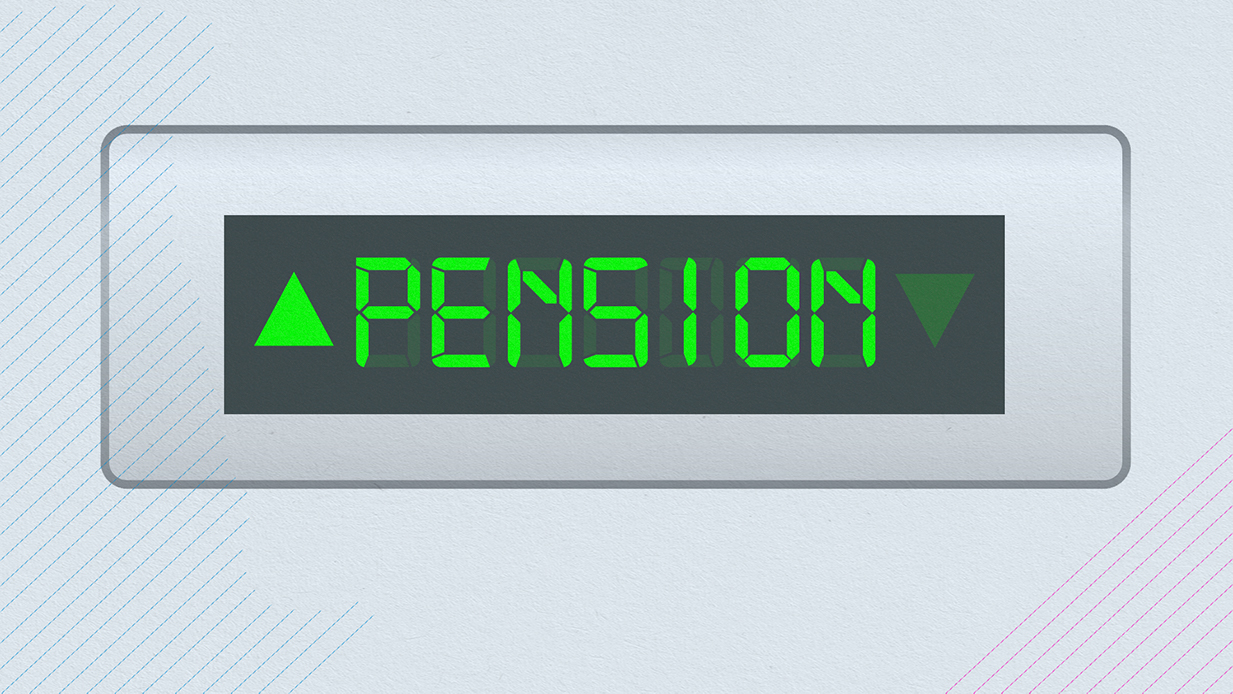Why does my pension go up and down?
A 5 minute read

Why does my pension go up and down in value?
Did you know your pension goes up and down in value because it’s invested, and the value of investments tends to go up and down?
If you didn’t, you’re in good company. According to a survey by investment provider Hargreaves Lansdowne, over one-third (34%) of the people they surveyed didn’t know how their pension was invested.
Knowledge is power
When it comes to pensions, ignorance is definitely not bliss. Knowledge is power, and knowledge about pensions has the power to improve your future. Let’s find out more about pensions and investment.
What kind of pension?
We’re talking about defined contribution (DC) pensions, which are based on contributions and investments. This is most modern pensions. The way your pension is invested can directly affect how much retirement income you get.
If you’ve got a defined benefit (DB) pension, these are still invested but the amount you get is based on your pay and the number of years you build up the pension.
Pension investing 101
Your pension money is invested to help it grow, so you get more income when you retire. It’s likely a sizeable part of it will be invested in the stock market.
But that sounds dangerous! Isn’t the stock market very risky?
We’ve all heard the investment risk warning ‘the value of your investments can go down as well as up’. But there’s another risk – that over the long term, your money won’t grow enough to beat inflation, especially the way inflation is going at the moment.
Investing in the stock market means your money buys shares in companies, also known as stocks or equities. Equities tend to go up and down in value – sometimes by a lot – so the value of your pension money also goes up and down.
But hang in there, because over the long term, equities have generally grown faster than inflation. And pensions are very long-term investments. They’re invested over lifetimes.
Protection time
As you get closer to retiring you may want to protect the value of your money rather than growing it more. This is where investments like bonds, gilts and cash come in.
Bonds are loans to companies; gilts are loans to the Government. They’re generally considered lower risk than equities as their short-term value tends not to go up and down as much.
Cash is also considered low risk as it holds its face value well in the short term (although inflation can eat its value away in the long term).
Some pension schemes invest in property (usually commercial property – shops, offices and warehouses) and infrastructure (for example, transport networks, water and sewage systems, and energy). These are generally considered medium risk. They tend to grow slowly over the long term and, although their value can be affected by economic conditions, they aren’t necessarily affected in the same way as equities and bonds. This makes them useful for spreading risk around.
Which brings us to –
The value of spreading it around
Diversification is a known way to reduce the risk of falls in value. It involves spreading money around lots of different types of investment, in different investment markets around the world.
Why? If one type of investment, market, or part of the world does badly, it doesn’t mean all your money loses value. Other areas are likely to be doing better – levelling out the risk of losses.
What about ethical investing?
This is becoming more popular as people realise their pension money has the potential to do good. Many people would prefer to see their money helping to fund schools, hospitals, public transport and renewable energy rather than fossil fuels and weapons, for example.
Pension schemes can now make investment decisions based on environmental, social and governance (ESG) factors. These look at environmental and social impact and also how companies are managed (governance) – how they treat their employees, for example.
So how is your pension invested?
It’s easy to find out. Just ask your employer or pension provider.
If you’ve never thought about investing, it’s likely you’re in your pension’s default investment option – the one you’re put into if you don’t choose anything else. Around 95% of DC pension scheme members are in a default option.
Lifestyle option? Check your retirement age
Most default options use lifestyling (an odd name, as it has nothing to do with lifestyle). It’s a way to help your money grow, then protect its value when you want to turn it into a pension, by balancing different kinds of investment risk.
Lifestyle options usually:
- use higher-risk investments that are more likely to grow in the long term (such as equities) during most of your working life, then
- move your money to lower-risk investments that are more likely to keep their short-term value (such as bonds, gilts and cash) as you get closer to retiring.
This change from growing to protecting is timed according to the retirement age your provider has on record for you. It’s vital to check your retirement age and make sure it fits your plans. Many providers use State Pension age if you haven’t told them anything else.
Why does this matter?
- If you retire earlier than the age your provider has, your money might not have finished moving to lower-risk investments – so it could fall in value.
- If you retire later, your money might move to lower-risk investments too early – so you could miss out on investment growth.
Choosing your own
Most pension schemes offer the chance to choose your own investments if you feel comfortable doing this. Here are the basic points to remember when you’re choosing investments.
- Higher risk of going up and down in value = more growth over the long term
- Lower risk of going up and down in value = more protection in the short term
- Spreading investments around = lower risk of falls in value
You’ll need to do your own lifestyling – switching your money into lower-risk investments – as you get close to retiring.
Get involved with your pension
To get the best from your pension, get involved. You could start by asking your provider how your pension is invested.
- If you’re in the default option, have a good look at it to make sure it suits your plans.
- If you’re in a lifestyle option, check your retirement age. Change it if it doesn’t match when you plan to retire.
- Ask your provider what they’re doing about ethical investment – whether they use ESG to help choose investments, for example.
- While you’re there, look at how much you’re saving. Now you know how investment helps it build up, do you want to save a little more?
Improve your future. Get involved with your pension.
DO NOT EDIT THIS BOX UNLESS YOU'RE NOEL

-svg.png?width=200&height=73&ext=.png)